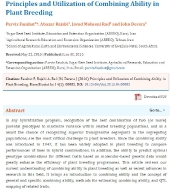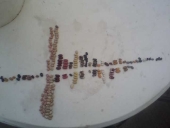posted 4 years ago
My understanding of hybrid varieties, as produced by seed companies, is that they're the result of crosses of two distinct stable (Homogenous/inbred/Open-pollinated(?)) varieties. And then you get F1 hybrid seeds where all the offspring are uniform, and the seed company sells them to you along with the conventional wisdom that "you can't save seeds from hybrids, so you better buy seeds every year".
- What are the parent varieties that go into commercial hybrids seeds?
- Is that always a closely-guarded / patented trade secret, or is there some list of "recipes" for commonly-produced hybrid varieties?
- Are the parent lineages themselves well guarded and not widely available?
- Or if we just knew the right "recipe" of inbred varieties to cross, could we produce the exact same hybrids, because the parent varieties are easily obtainable?[/list]
The reason that I was thinking about this is because last year I grew a pepper called "Fireball F1", and, contrary to "conventional wisdom", I saved its seeds and grew a bunch of them out. I have a dozen of its offspring growing in a single large pot, and it's striking to see the different shapes and colors of fruits that it produces. Fat jalapeno-shaped red peppers, long red peppers, long orange peppers, round red peppers similar to the original F1 hybrid's shape.
I thought that it would be interesting to know what varieties were crossed to make "Fireball F1" (and, in the more general case, just any commercial hybrid that I save seeds from), just for the sake of better understanding where different traits in the F2 offspring came from. But I haven't found any source, anywhere on the internet, that tells me what varieties are crossed to make any commercial hybrids. If hybrid "recipes" are patented, I would expect that the patent would eventually run out, and so that we might at least have some info about older hybrids, such as "Early Girl" tomato. Wikipedia indicates that "Early Girl" originated in 1975, and that it is no longer under USDA "plant variety protection" which lasts 25 years, but I haven't found any formula that tells me what varieties one could cross to make an "Early Girl".
Not that I want to produce commercial hybrids, I'm just thinking about this for informational purposes to try to figure out more about what the lineage is when I flout conventional wisdom and save seeds from hybrid varieties and end up with all sorts of weird plants.







